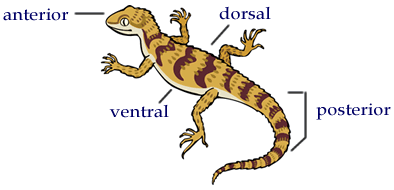Introduction to the Animal Kingdom

Most diverse kingdom in appearance
Each phylum has its own typical body plan (arrangement)
What is an Animal?
Animals are heterotrophic, eukaryotic, and multicellular and lack cell walls.
95% = invertebrates (do not have backbone)
5% = vertebrates (have a backbone)
What Animals do to Survive
Physiology = Study of the functions of organs
Anatomy = the structure of the organism/organs
Zoology = the study of animals
There are 7 essential functions of animals:
1. Feeding:
Herbivore = eats plants
Carnivore = eats animals
Omnivore = eats plants and animals
Detritivore = feed on decaying organic material
Filter Feeders = aquatic animals that strain food from water
Parasite = lives in or on another organism (symbiotic relationship)
2. Respiration:
Take in O2 and give off CO2
Lungs, gills, through skin, simple diffusion
3. Circulation:
Very small animals rely on diffusion
Larger animals have circulatory system
4. Excretion:
Primary waste product is ammonia
Liquid waste
5. Response:
Receptor cells = sound, light, external stimuli
Nerve cells => nervous system
6. Movement:
Most animals are motile (can move)
Muscles usually work with a skeleton
7. Reproduction:
Most reproduce sexually = genetic diversity
Many invertebrates can also reproduce asexually = to increase their numbers
rapidly
Trends in Animal Evolution
Body Symmetry -the body plan of an animal, how its parts are arranged
Asymmetry - no pattern (corals, sponges)
Radial Symmetry - shaped like a wheel (starfish, hydra, jellyfish)
Bilateral Symmetry - has a right and left side (humans, insects, cats, etc)
Cephalization - anterior concentration of sense organs, basically the organism has a head, usually with eyes, nose and other sense organs, plus a brain
Body sides: anterior, posterior, dorsal, ventral

Segmentation - segments of the body become specialized for specific purposes
Trends in Animal Evolution
Early Development:
Zygote = fertilized egg
Blastula = a hollow ball of cells
Blastopore = the blastula folds in creating this opening
Protostome = mouth is formed from blastopore
Deuterosome = anus if formed from blastopore
Anus = opening for solid waste removal from digestive tract
The cells of most animal embryos differentiate into three layers called germ layers
Endoderm = (innermost) develops into the lining of the digestive tract and respiratory tract
Mesoderm = (middle) muscle, circulatory, reproductive, and excretory systems
Ectoderm = (outermost) sense organs, nerves, outer layer of skin
Kingdom Animalia
1. Phylum Porifera (sponges)
2. Phylum Cnidaria (sea anemones, jellyfish, coral, hydra)
3. Phylum Platyhelminthes (flatworms)
4. Phylum Nematoda (roundworms)
5. Phylum Annelida (segmented worms, earthworms, leeches)
6. Phylum Mollusca (clam, squid, snails, slugs)
7. Phylum Arthropoda (crustaceans, insects, spiders)
8. Phylum Echinodermata (starfish)
9. Phylum Chordata (includes all vertebrates)
Student Activities and Resources
Investigation: External Anatomy of a Crayfish
